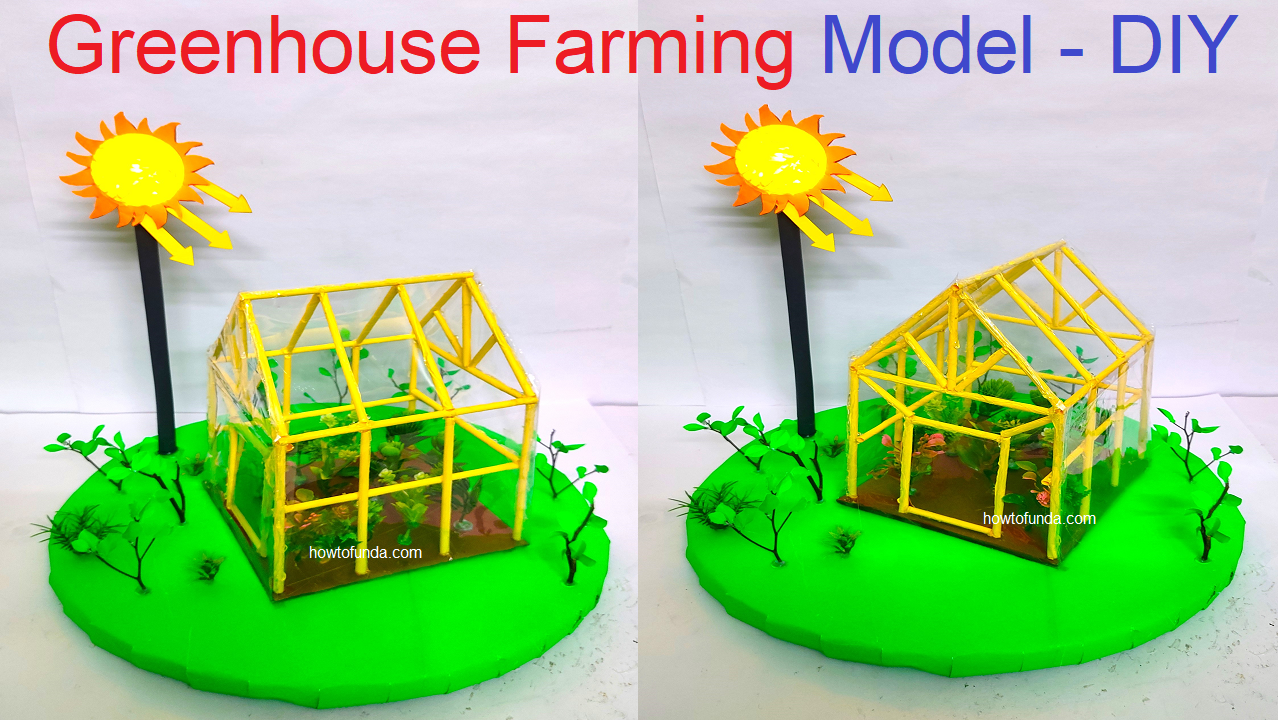Greenhouse farming, also known as greenhouse cultivation or controlled environment agriculture, involves the cultivation of plants within a controlled environment, usually a structure covered with transparent material like glass or plastic.
This method provides a favorable microclimate for crops, allowing for enhanced control over factors such as temperature, humidity, light, and carbon dioxide levels.
Here’s an introduction to greenhouse farming:
- Purpose of Greenhouse Farming:
- Greenhouses are designed to extend the growing season and create an optimal environment for plant growth. This allows farmers to cultivate crops throughout the year, even in regions with harsh climates.
- Components of a Greenhouse:
- Frame: The structure that supports the greenhouse, usually made of metal, wood, or plastic.
- Covering: Transparent material such as glass or plastic that allows sunlight to enter while providing insulation.
- Ventilation Systems: To control temperature and humidity levels inside the greenhouse.
- Heating Systems: Used in colder climates to maintain suitable temperatures.
- Cooling Systems: To prevent overheating during warmer periods.
- Shade Netting: Protects plants from excessive sunlight and heat.
- Automated Systems: Such as drip irrigation, automated climate control, and nutrient delivery systems.
- Advantages of Greenhouse Farming:
- Extended Growing Season: Allows for year-round cultivation.
- Crop Protection: Shields plants from adverse weather conditions, pests, and diseases.
- Optimal Growing Conditions: Enables control over temperature, humidity, and other environmental factors, promoting faster and healthier plant growth.
- Water Conservation: Efficient use of water through controlled irrigation systems.
- Increased Crop Yields: The controlled environment often leads to higher productivity.
- Types of Greenhouses:
- High Tunnel Greenhouses: Simple structures with minimal environmental control, often used for season extension.
- Polyethylene Greenhouses: Covered with plastic sheets and suitable for various crops.
- Glass Greenhouses: Traditional structures with glass covering for better light penetration.
- Hydroponic Greenhouses: Employing soilless cultivation methods for precise nutrient control.
- Crops Suitable for Greenhouse Farming:
- Vegetables: Tomatoes, cucumbers, peppers, lettuce, and herbs.
- Flowers: Roses, tulips, and other ornamental plants.
- Fruits: Strawberries, melons, and certain varieties of berries.
- Exotic and Off-Season Crops: Tropical fruits and vegetables in non-tropical climates.
- Environmental Considerations:
- Energy Use: Depending on the design, greenhouses may require supplemental heating or cooling, impacting energy consumption.
- Sustainability: Efforts to make greenhouse farming more sustainable include the use of renewable energy, water conservation, and eco-friendly materials.
- Global Significance:
- Greenhouse farming has become increasingly important in meeting the demand for fresh produce and addressing food security concerns, particularly in regions with challenging climates.
Creating a working model of a greenhouse for farming using transparent sheets, cardboard, and LED lights can be an exciting and educational project.

Here’s a step-by-step guide to help you build a simple yet effective greenhouse model:
Materials:
- Transparent plastic sheets or clear plastic file folders
- Cardboard sheets
- Ruler
- Craft knife or scissors
- Glue or tape
- Popsicle sticks or wooden skewers
- LED lights
- Batteries and battery holder
- Small containers for planting (cups, small pots, etc.)
- Potting soil
- Small plants or seeds
- Marker or paint (optional for decorating)
Step by step Instructions greenhouse farming working model :
- Prepare the Base:
- Cut a large piece of cardboard to serve as the base of your greenhouse. This will be the foundation for the structure.
- Create the Frame:
- Cut cardboard strips to form the frame of the greenhouse. You can make a simple rectangular structure with a pitched roof. Attach the strips to the base using glue or tape.
- Cover with Transparent Sheets:
- Cut the transparent plastic sheets to match the size and shape of the cardboard frame. Attach the sheets to the frame, creating the walls and roof of the greenhouse. Ensure that the plastic is sealed well to trap heat and moisture.
- Add a Door:
- Cut a section of the plastic sheet to serve as the door. Attach it to one side of the greenhouse frame using tape or hinges if you want it to be functional.
- Install LED Lights:
- Attach LED lights to the inside of the greenhouse using popsicle sticks or wooden skewers as support. Place the lights evenly to simulate sunlight. Connect the LED lights to a battery holder with batteries.
- Prepare Planting Containers:
- Fill small containers with potting soil. You can use cups, small pots, or any other suitable containers.
- Plant Seeds or Seedlings:
- Plant seeds or small seedlings in the containers. Ensure that the chosen plants are suitable for indoor or greenhouse cultivation.
- Place Containers Inside the Greenhouse:
- Arrange the planting containers inside the greenhouse, ensuring they receive adequate exposure to the LED lights.
- Observe and Monitor:
- Turn on the LED lights to simulate sunlight. Observe how the greenhouse environment influences the growth of the plants. Monitor factors such as temperature, humidity, and plant development.
This model provides a basic representation of how a greenhouse works by trapping heat and allowing plants to thrive in a controlled environment.
It’s a great way to demonstrate the principles of indoor farming and the use of artificial light sources for plant growth.

